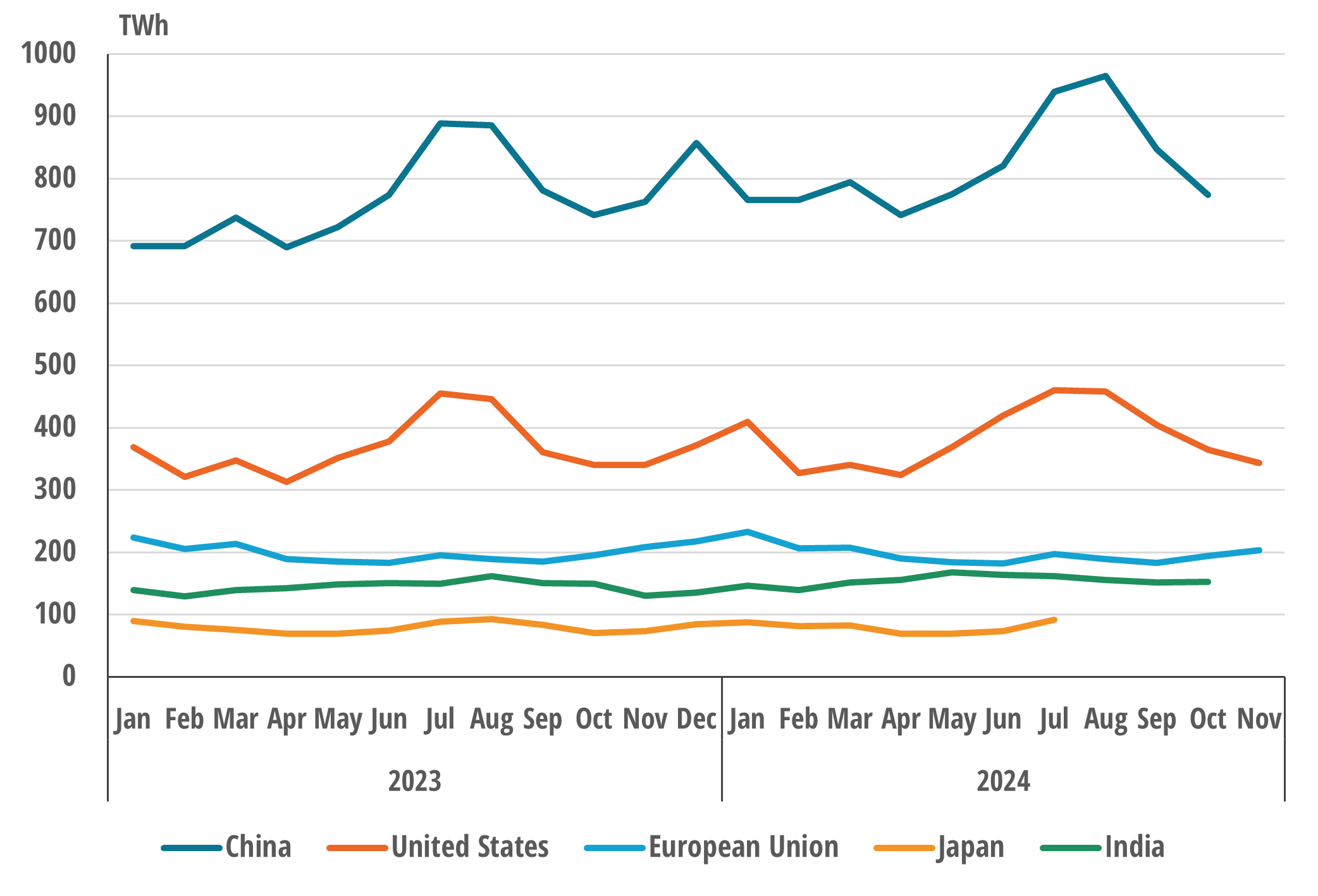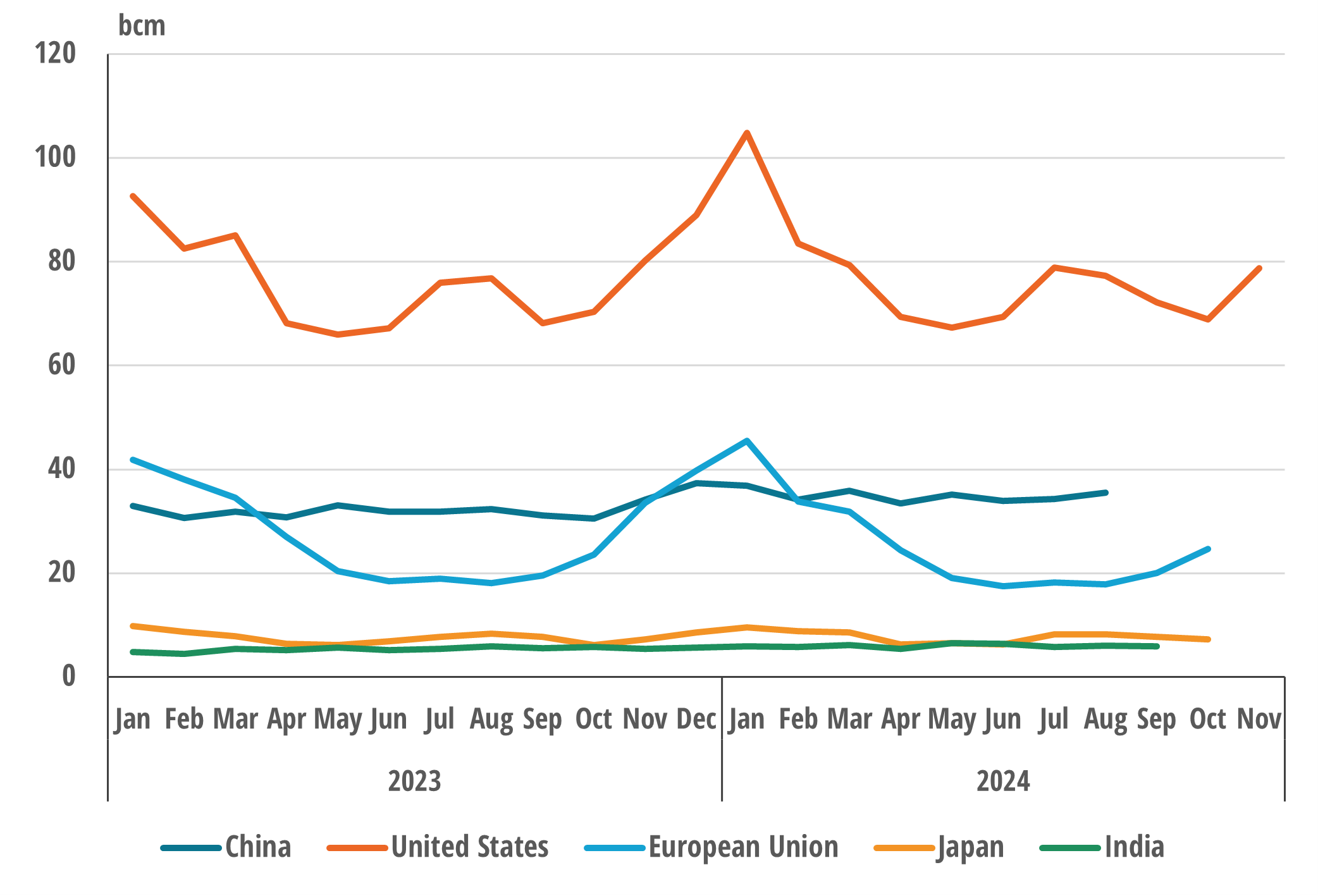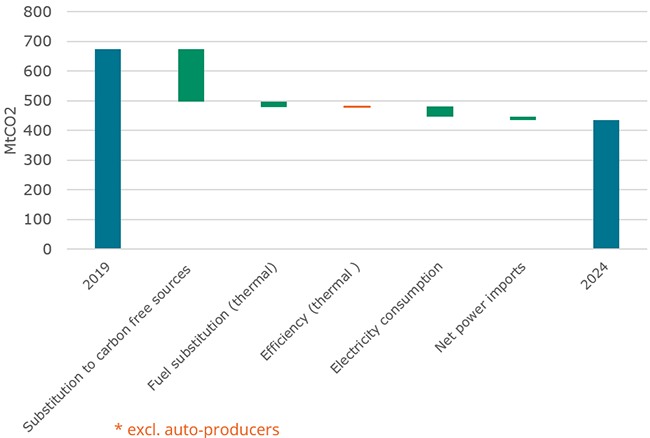Request the full 2025 publication (free)
Continued growth in energy consumption and emissions
Discover the new edition of our Global Energy Trends, an exclusive analysis based on first-released 2024 consolidated statistics on energy and CO2 emissions, crafted by our experts, leveraging our unique databases.
This year, our senior analysts have contextualised these findings against long-term climate targets.
- Which regions are making substantial contributions to climate mitigation?
- Which must accelerate their efforts to meet 2050 targets?
- What are the underlying drivers explaining why Europe is struggling to achieve the Paris Agreement objectives?
This report leverages several services from our Energy Intelligence & Data Platform, surch as EnerMonthly
Discover the monthly trends in the energy landscape, including:
- Consolidated 2024 and 2025 data series – country benchmarking and year-on-year comparison:
- Electricity snapshot: production and net consumption
- Primary energy consumption by source: coal, oil, and natural gas
- Coverage: China, United States, European Union, India, and Japan
Source: Enerdata, EnerMonthly Database

Source: Enerdata, EnerMonthly Database

Source: Enerdata, EnerMonthly Database

Source: Enerdata, EnerMonthly Database
2023 vs 2024 comparison of key energy and climate figures for G20 countries
G20 countries account for 80% of global energy consumption
Figures in orange: data for 2024
Figures in blue: data for 2023
Key Takeaways:
Global energy consumption is accelerating faster than before the crisis, notably driven by increased coal and gas use. Fossil fuels maintain their significant share in the G20 energy mix, with coal consumption rising in non-OECD countries, particularly China, India, and Indonesia. Gas consumption has also rebounded in the USA and Russia. Conversely, oil consumption experienced a slight decline in 2024, following its 2023 rebound, attributed to the growing adoption of alternative transport fuels like electric vehicles in China and the US, and biofuels in Brazil.
A widening disparity in energy consumption trends is evident between non-OECD countries, led by China, India, and Indonesia, and OECD countries, especially in the EU, where consumption is either stable or declining.
Despite these trends, renewable power generation continues its rapid expansion, achieving record levels of new installations. China played a pivotal role in this growth, adding 278 GW of solar and 80 GW of wind in 2024, accounting for 69% and 76% of the G20’s respective additions. By the end of 2024, China represented half of the G20’s total installed wind and solar capacity. This surge contributed to an 8% increase in wind generation, now comprising 9% of the G20 electricity mix, while solar production jumped by 29%, reaching 7% of the electricity mix.
Total G20 energy consumption growth (%/year)

Source: Enerdata, Global Energy & CO2 Data
Energy consumption rose by 2% in 2024, faster than over 2010-2019. It grew rapidly in non‑OECD countries, especially China (+4%), India (+5%) and Indonesia (+6%). Despite a slowdown in 2024, China still accounted for 35% of the G20's energy consumption, consuming twice as much energy as the USA.
Comparing recent trends with decarbonisation pathways
Key Takeaways:
Energy consumption is currently rising at a faster pace than before the energy crisis. There is a notable lack of significant decoupling between GDP and energy consumption, as well as between energy consumption and CO2 emissions. With each passing year, the world moves further away from a pathway compatible with the objectives of the Paris Agreement.
Dynamics vary considerably across G20 regions: energy consumption and CO2 emissions are rising in emerging countries while remaining relatively stable in developed economies; however, this divergence is largely driven by economic and demographic factors.
Although renewable energy sources continue their expansion, their growth rate remains insufficient, and the electrification of end-uses is still minimal. Consequently, the consumption of fossil fuels continues to rise in volume.
Recent drivers behind energy consumption and emissions in the European Union
Key Takeaways:
The recent decrease in emissions within the EU is largely attributable to moderate economic and demographic growth. This trend is underscored by a decline in European industrial activity, particularly pronounced since 2022. Notably, increasing populations and better access to energy are not drivers to energy consumption, which contrasts with emerging economies.
While low-emission and energy-efficient technologies are emerging, their adoption rate remains insufficient; significant decarbonisation of power generation has occurred, but its overall impact is limited without broader electrification of end-uses. Electric vehicles and heat pumps, despite their potential, remain niche technologies and are beginning to show signs of slowing adoption.
Furthermore, some positive behavioural shifts are observed, such as energy sufficiency in households, primarily as a response to high energy prices, and passenger traffic remains lower than its pre-COVID levels.
Emission drivers in power generation* in the EU

Source: Odyssee, Enerdata
Industrial activity in the EU has declined by 5% since 2022. This trend is particularly pronounced in energy-intensive industries, which experienced a 7% reduction when accounting for the energy consumption of different branches. This decrease in activity largely explains the reduction in both energy consumption and CO2 emissions within the industrial sector. Additionally, overall electricity consumption has decreased since 2015, and electricity has only gained a marginal share in total energy consumption.
View the table of contents of the report:
For the full report, click on the button below
 Energy and Climate Databases
Energy and Climate Databases Market Analysis
Market Analysis